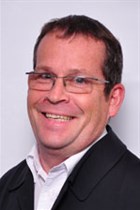Microwave technology has advanced considerably. As the long wait for fibre-to-the-business gets wearisome and begins to hamper productivity and operational effectiveness, and customers begin to move to the competition, microwave is becoming a viable last mile stand-in.
It’s not always possible or desirable to put fibre in the ground. It can be costly, so there needs to be a big enough demand before operators will invest. In addition, even with overhead fibre transmission, permissions need to be obtained and regulations met, which can be time consuming and painstaking. Microwave, a point to point technology that works well over short distances, provides an ideal alternative, especially as the technology has become more robust and mobile solutions make it easy for operators to ‘drive and park’ microwave equipment wherever they need it.
The biggest challenge in the past has been the shortcomings of the technology. Vulnerability to atmospheric interference – other frequencies and heavy downpours, for example, can result in degraded transmission. Microwave technologies were also not robust enough to reliably transmit high speed data. In addition, setting up the point-to-point connections was difficult. New advances have improved these weaknesses including new software to auto recognise focal points and troubleshoot, and new technologies that make microwave less prone to interference.
This makes microwave very relevant to companies in remote areas or with challenging geography that require the throughput; for remote or rural towns that need a high speed link to centres of commerce; and to operators dealing with growing traffic and customer bases, as an inexpensive backhaul solution or for additional redundancy.
How easy is it to implement?
Microwave is a high frequency solution requiring line of site to the next tower to transmit data, with a range of anything from 1 to 100km. The cost of the implementation is usually integrated into and spread across the period of the subscription period – e.g. 24 to 36 months – while monthly costs will vary from a couple of thousand rand to tens of thousands of rand depending on the bandwidth and the traffic utilised.
While users can make use of a common unlicensed frequency for their solution, in certain areas it can be crowded and noisy and quality of service cannot be guaranteed. A number of large South African operators have the required licensed frequency spectrum and have created a microwave network that their clients can leverage. To connect, a microwave dish needs to be installed at the client site within line of site of the operator’s microwave tower/s, or the closest microwave dish.
The service provider will provide the resources to do the planning and installation. They make use of specialist providers to get the job done well within budget and deadlines. Over the next three to five years as fibre slowly grows, demand for microwave technologies is expected to continue to grow. It may be an alternative, backup solution or interim solution worth considering.































